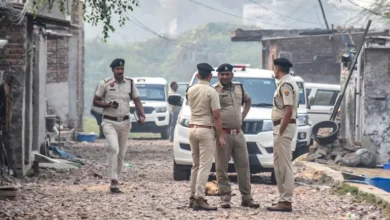Data Affordability in India – Not Just Impressive, its Transformative

India’s mobile data prices are the lowest in the world. This affordability has skyrocketed internet usage, enabling more people to access information, stay connected, and explore new opportunities. It’s a game-changer, especially in a country as diverse and populous as India.
Addressing the India Mobile Congress (IMC) 2024, Prime Minister Narendra Modi spoke about India’s remarkable achievement in reducing data costs, stating that the country now offers internet access at an astonishingly low rate of just 12 cents per gigabyte (GB).
The India Mobile Congress (IMC) 2024 at Bharat Mandapam in New Delhi from October 15-18, co-hosted by the Department of Telecommunications (DoT) and the Cellular Operators Association of India (COAI), themed “The Future is Now” coincided with the World Telecommunication Standardization Assembly (WTSA) 2024.
With over 1.2 billion mobile users and 950 million internet users, PM Modi also emphasised the significance of hosting the World Telecommunication Standardization Assembly (WTSA) and IMC together. “While many countries charge 10 to 12 times more for data, India has made a concerted effort to ensure that connectivity is accessible to all,” he said.
This achievement is part of India’s broader Digital India vision. The Prime Minister reiterated that affordable data is a crucial component of this initiative, allowing more people to connect to the internet and participate in the digital economy.
“In just a decade, we have laid enough fibre to cover eight times the distance between the Earth and the moon.” Laying that much fibre optic cable is no small feat and it speaks volumes about India’s commitment to improving digital connectivity. This vast network of fibre optic cables is crucial for supporting high-speed internet, 5G, and future 6G technologies.
The IMC also highlighted India’s ambitions to lead globally in the development and implementation of 6G technology. India is integrating various programs to offer comprehensive technological solutions to the world, further strengthening its position in global telecom leadership.
Digital India vision has led to a transformation in government operations, and India is set to lead in both technological development and delivery. The Digital India vision, launched by Prime Minister Narendra Modi on July 1, 2015, aims to transform India into a digitally empowered society and knowledge economy. The initiative focuses on digital infrastructure as a core utility to every citizen, ensuring high-speed internet access across urban and rural areas.
Governance and services on demand, making government services accessible electronically to improve transparency and efficiency. And digital empowerment of citizens: Promoting digital literacy and inclusion to bridge the digital divide. The program is built on nine pillars, including Broadband Highways, Universal Access to Mobile Connectivity, and Public Internet Access Programmes. It’s all about leveraging technology to enhance the quality of life for every citizen and fostering economic growth.
With over 1.2 billion mobile users and 950 million internet users, it’s no wonder the country is a global leader in digital connectivity. This vast network drives innovation, entrepreneurship, and social change at an unprecedented scale. It’s incredible to think about how this digital revolution is reshaping everything from education to healthcare, governance, and beyond.
The reduction in data costs in India over the years has been quite dramatic. In 2015, the cost of 1 GB of data was around ₹226 (approximately $3.30). By 2017, the average cost per GB had dropped to ₹11.78 (approximately $0.17). In 2019, data prices further decreased to around ₹12-₹14 per GB and presently in 2024 the cost has reached as low as ₹12 per GB (approximately $0.17)
Internet connectivity in India is so affordable primarily due to hyper-competition among telecom operators. When Reliance Jio entered the market in 2016, it offered extremely low data tariffs, starting at just ₹15 (about $0.21) per GB2. This aggressive pricing forced other operators to lower their prices to stay competitive.
The competition among telecom operators has driven prices down, making internet access more affordable for millions of people. The vast population and increasing demand for internet services have driven prices down as operators compete for more subscribers.
Supportive government policies and reduced regulatory costs have also played a role in making internet services more affordable. As more people come online, the cost per user decreases, allowing operators to offer cheaper plans. This combination of factors has made India a global leader in affordable internet connectivity.
Since its official launch in October 2022, India has seen rapid deployment and widespread adoption of 5G. India has deployed over 425,000 5G sites across 738 districts. This rapid rollout has set a global benchmark. As of now, India boasts over 180 million 5G subscribers, with projections to reach 840 million by 2029. 5G has significantly improved connectivity, with average download speeds increasing by 70% in South Asia.
5G is expected to create new job opportunities and boost sectors like manufacturing, healthcare, and education. Telecom operators are introducing innovative services like 5G Fixed Wireless Access (FWA), enhancing internet access in rural areas. India’s 5G journey is transforming the digital landscape, making high-speed internet accessible to millions and unlocking new opportunities across various sectors.
The Digital India initiative has yielded significant dividends across various sectors. The initiative has spurred economic growth by fostering innovation and entrepreneurship. The proliferation of digital services has created new job opportunities and boosted productivity.
Digital payment systems like UPI (Unified Payments Interface) have revolutionised banking in India, making financial services accessible to millions of people, including those in rural areas. These dividends are just the beginning. As the Digital India vision continues to evolve, the potential for further positive impact is immense.
India has ambitious plans for 6G, aiming to become a global leader in this next-generation technology. The Indian government has launched the Bharat 6G Vision, aiming to develop and deploy 6G network technologies by 2030. The vision emphasises affordability, sustainability, and ubiquity.
A group of experts from various ministries, research institutions, and telecom service providers called the ‘Technology Innovation Group (TIG-6G)’ has been formed to develop a roadmap for 6G. India aims to secure 10% of global 6G patents and lead the world in 6G technology.
6G is expected to revolutionise sectors like education, healthcare, manufacturing, and agriculture by providing ultra-low latency and speeds up to 1 terabit per second. The government has made policy changes to support 6G development and is investing heavily in research and infrastructure.
India’s commitment to 6G is part of its broader vision to enhance digital connectivity and drive socio-economic growth. It’s an exciting time for the country’s tech landscape!













